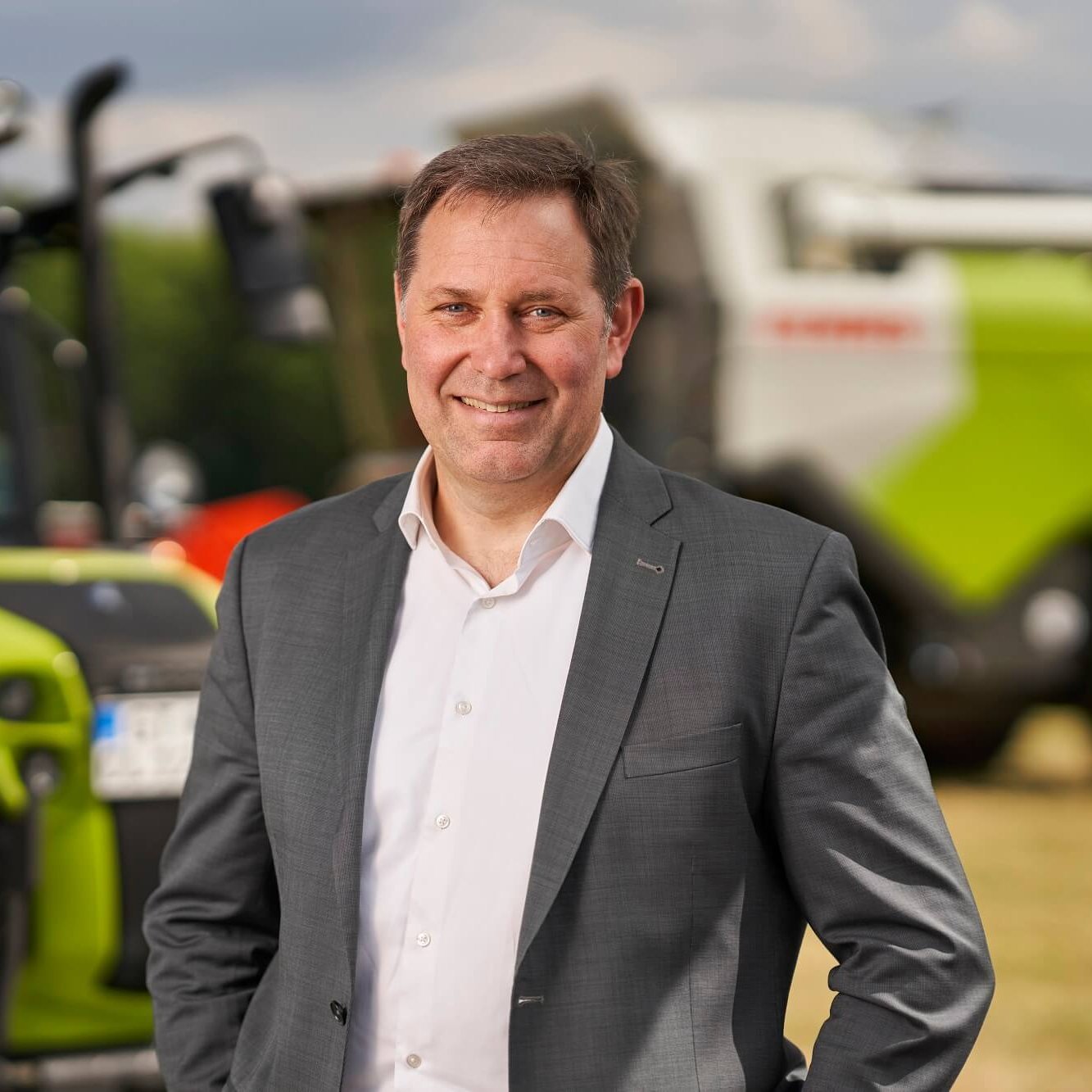Jan-Hendrik Mohr is CEO of the global agricultural machinery manufacturer CLAAS. In his keynote speech, he will look at different approaches and the particular challenges involved in the development of drivetrain technologies for agricultural machinery.
„Agricultural Technology is Facing a Fundamental Change“
Jan-Hendrik Mohr is CEO of the globally active agricultural machinery manufacturer CLAAS from Harsewinkel in Westphalia. The family-owned company is the European market leader in combine harvesters and the global market leader in forage harvesters. Its portfolio also includes tractors, agricultural balers and green fodder harvesting technology as well as wheel loaders, telescopic handlers and digital customer solutions. At the 24th International VDI Congress Dritev, Jan-Hendrik Mohr will talk about the development of drive technologies in agricultural machinery and the challenges in the drivetrain of agricultural machinery. In this interview, he answers our questions in advance.
What are currently the main challenges in the development of drivetrain technologies in agricultural machinery?
Jan-Hendrik Mohr: The question of the right drive is definitely one that has always occupied us at CLAAS and will continue to do so. From trailed mower-binders more than 100 years ago to today's development of large tractors, self-propelled combine harvesters and forage harvesters, we are always on the lookout for new technological solutions for our customers in the agricultural sector.
Our continuously variable transmissions, our industry-leading driver assistance and process optimization system as well as our soil-friendly crawler tracks and tire pressure control systems are just some of the technologies already established for optimizing the drivetrain – together they have the goal of offering our customers ever more efficient agricultural machinery for even more sustainable farming.
We are also seeing how the market and general conditions are changing and that the demand for alternative drives is increasing. However, the new solutions must combine the need to increase efficiency and at the same time conserve resources to achieve an overall sustainable increase in productivity – in each case with our demand for practicality and financial feasibility. As a family business and agricultural machinery manufacturer, we are very aware of our responsibility to future generations and strive for long-term solutions that achieve real sustainability effects not only in theory but also in practice. This also includes looking at the replacement of fossil fuels, for example, to power agricultural machinery.
What role could alternative drives play in agricultural machinery in the future?
Jan-Hendrik Mohr: Agriculture is a complex industry and demands individual approaches due to different requirements and diverse areas of application. In the passenger car sector, for example, battery electric drives and plug-in hybrids have emerged as leading technologies, as these solutions have proven to be practicable.
In agriculture, we have different seasonal requirements. These range from regular and light yard and field work to the use of powerful machines such as large tractors and harvesters. The latter requires high machine performance and utilization with high energy requirements and a practical range. In addition, it is often not just individual vehicles that are used, but machine fleets with sometimes more than ten large machines – so that the energy requirement multiplies in a certain, often very limited period, such as the grain and maize harvest. This means that we have different, more specific requirements in agricultural technology than in other sectors of the economy.
So we don't have a one-to-one comparison with other sectors, but we do look at developments in the truck and construction machinery industry, for example, as a reference.
Which technologies are you focusing on in particular?
Jan-Hendrik Mohr: We are currently looking at various approaches, from battery-powered electric drives to gas-powered solutions and environmentally friendly liquid fuels.
The challenge lies in the fact that the use of alternative drives often completely changes the machine architecture in terms of the required installation space and weight, and can also entail a considerable investment in the infrastructure of agricultural businesses in order to ensure the provision of resources.
A battery-electric drive will be a suitable alternative for small tractors in the future, for example. However, the solution is impractical for use with large tractors, as the machine becomes too large and too heavy to carry enough energy for a working day or frequent recharging is not possible in terms of time. This makes the solution inefficient, cost-intensive and anything but soil-friendly.
Our intensive investigation therefore focuses not only on the technical challenges, but also on the agricultural infrastructure and the future availability of energy on the farms.
Which alternative drives will primarily play a role in agricultural technology?
Jan-Hendrik Mohr: The battery-electric drive is well suited for farm-related and municipal applications with low energy requirements, such as “small” tractors up to 150 hp. We have already demonstrated this at AGRITECHNICA 2023 with the SCORPION 732e prototype.
The use in large machines for arable farming currently depends on the general development of technologies and the creation of a political framework. It is important to emphasize that we at CLAAS are open to the question of alternative drive systems.
For us, a sustainable increase in productivity and environmental compatibility also means that it is necessary to consider the entire process chain. The aim is to increase overall machine efficiency, i.e. in addition to considering alternative drives, this also includes, for example, increased process efficiency with the help of networked machines and the optimization of operation through smart automation.

Source: CLAAS
